Can I Put a Sunroof in My Car
Last Updated on September 17, 2021
Sunroof versus moonroof. How are they the same? How are they different? It's not as straightforward as it may sound. Let's first look at some background in this regard.
Then we'll consider the numerous sunroof (moonroof) types and how one of them might best fit your future automobile needs.
Sunroof History
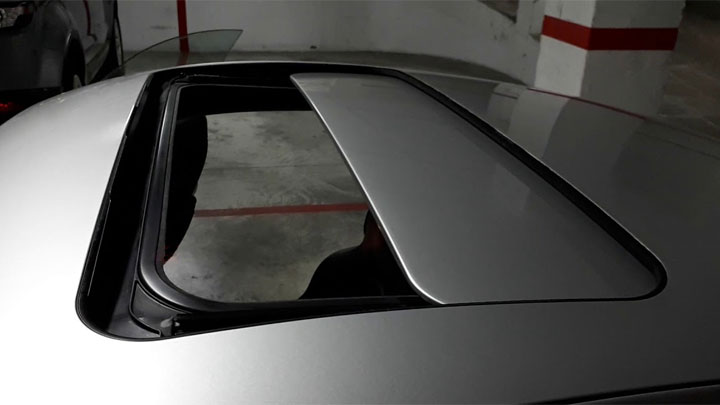
The automobile was initially developed alongside the horse drawn wagons and coaches in the United States and other countries. Gasoline engines replaced horses for motive power. But the passenger spaces of motor cars reflected the proven cabin styles of horse drawn vehicles.
In time, autocar body styles moved away from the wagon look. Open cars remained popular, but cloth tops became essential to keep the weather out. Fully enclosed cars for more comfort in the rain and cold became popular. Yet a lingering desire remained for that open feeling.
To recover that feeling, openable or removable panels were integrated into car roofs. These first emerged in Great Britain and Europe in the 1920's.
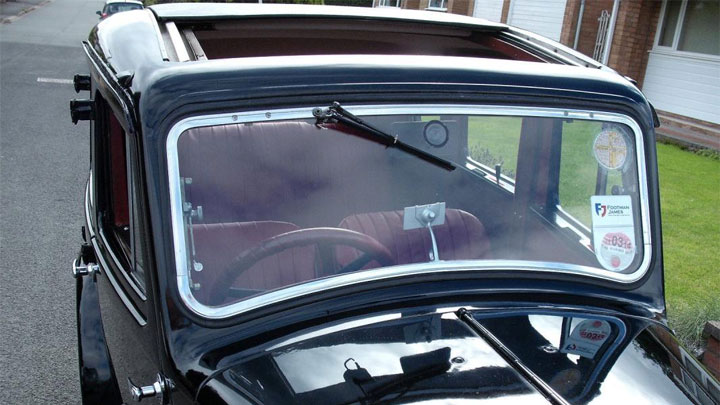
The Pytchley mechanism, patented in England, first appeared powering a sliding roof in the 1927 Daimler. United States' sliding roof romance began a decade or so later with cars built by Nash Motors.
A typical sunroof consists of a metal panel shaped to match the roof contours and painted the same color as the car. And most today are powered with some offshoot of the original Pytchley mechanism discussed earlier.
Moonroof History
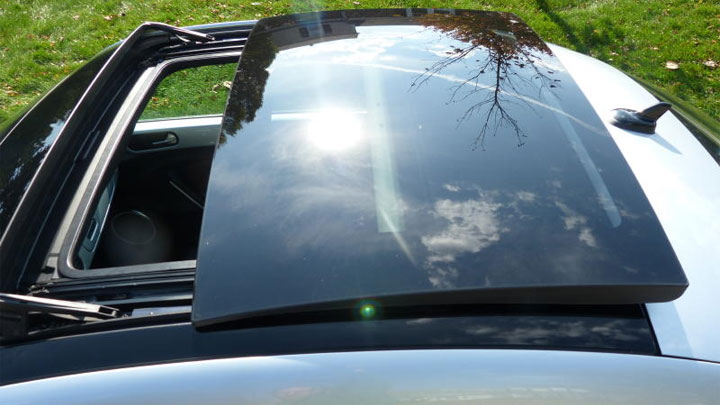
The moonroof had its roots in the fertile soil of the sunroof development process. Here's how that unfolded.
In the late 1950's a German company, Golde GmbH, was producing metal sunroofs for post production installation on automobiles. Sunroofs appeared on early BMWs, Volkswagens and Porsches.
Around that time, a family friend of the Golde's, Heinz Prechter, emigrated to study at San Francisco State University. A serious car enthusiast, he worked in a small body shop. Prechter and Ford were soon to cross paths.
Ford planned to introduce the sunroof on its 1960 Thunderbird. Working with Golde GmbH in Detroit, a manually-operated sunroof was fitted into the T'Bird. Ford heavily promoted this option, but the cost was high. Price-conscious customers were not quite sunroof ready. Ford shelved the concept.
Meanwhile, Heinz Prechter, with $764 in cash, started the American Sunroof Corporation. This new company began installing Golde sunroofs in California cars. ASC also put sunroofs on automobiles built by custom car king, George Barris.
Barris also had a design relationship with Ford. When Ford again looked at sunroofs in 1966, Barris nudged them toward ASC. Ford began sending 1967 Mercury Cougars to Prechter's Michigan facility for electrically-powered sunroofs.
That year's Cougar won Motor Trend's Car of the Year Award. Ford continued the option on the 1968 Cougar XRG-7 and added it to other models as well.
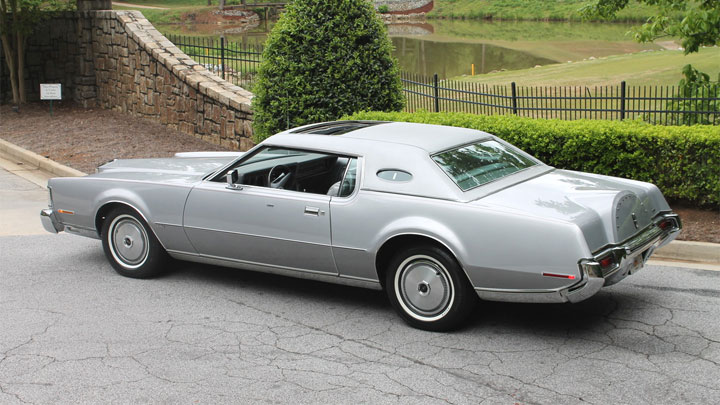
Sunroof popularity grew slowly. Undaunted, Ford continued to include it on the Cougar, the Thunderbird and several other models. Cadillac and the Buick Riviera soon joined the sunroof club.
In 1973 Prechter brought a fresh look to American sunroofs. Tempered, silver-tinted glass was fitted into the design. This roof included a sliding cover to shut out sunlight. Featured in the 1973 Lincoln Continental Mark IV, the moonroof was born.
Moonroof interest soared, but this clever name would not stick. On today's new car option lists, "sunroof" will be your pick when you want a tinted glass slide-away roof panel.
Still confused at how a sunroof and moonroof differ? Don't worry, you're not alone:
Different Types of Sunroofs
Sunroof or moonroof, many different styles of this device with various descriptive names have appeared over the decades of automobile manufacturing.
For simplicity we will drop the term "moonroof" (since that term is outdated) and use sunroof in all of our descriptions.
#1 – Inbuilt Sunroof
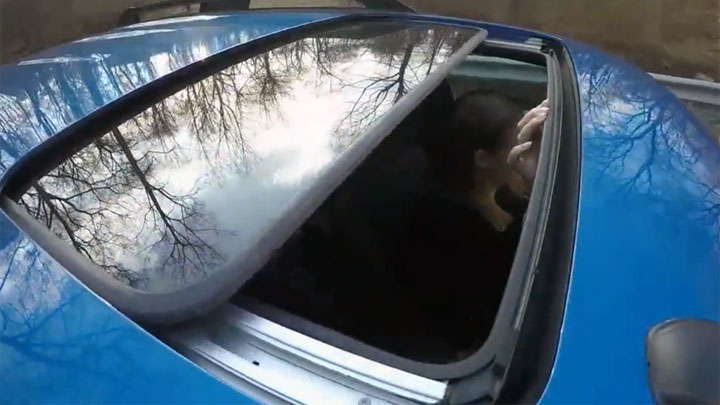
The most common current design, inbuilt systems may be manually or power operated. The roof assembly can both pop up its rear edge for ventilation or slide fully open into a recess in the headliner of the car.
The thickness required for this storage can reduce headroom in the back seat. When buying a car with this design roof, it's worth sitting back there to check this out before you make your purchase.
#2 – Pop-up Sunroof
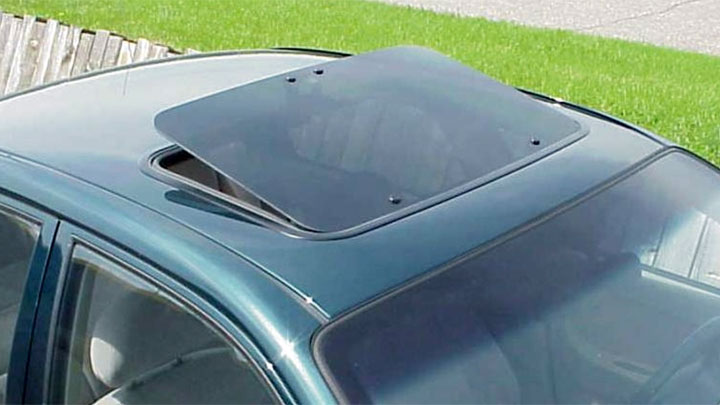
Typically manually operated. They do not slide open, but most are hinged at the forward edge and can be popped up at the rear for ventilation. Some can be completely removed for a fully open look.
Pop-up sunroofs may be of either metal or glass material. If glass, then often a sliding sunshade will be provided on the inside. To open the shade simply push it to the rear. It will hide between the headliner and the roof.
#3 – Spoiler Sunroof
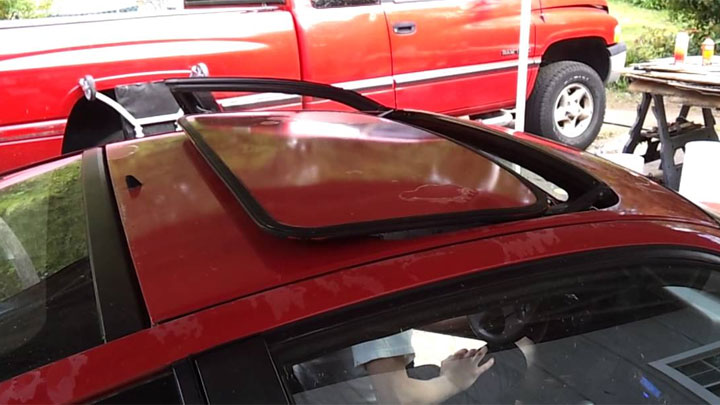
Sometimes called Tilt-&-Slide, these sunroofs can be tilted up like the pop-up but also slid to the rear to a full open position. They may be powered or manually operated. When open, the sunroof parks outside above the car roof like a spoiler hence the name.
#4 – Folding or Ragtop
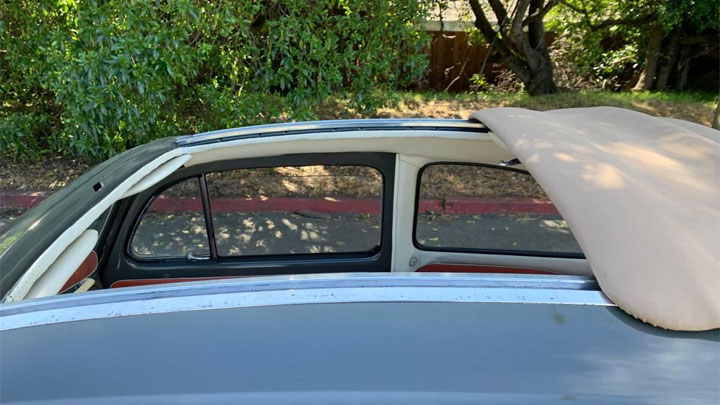
Found primarily on European cars, these sunroofs are of a fabric material typically fitted to a long opening in the roof. This bigger opening provides more of a convertible effect for passengers compared to other sunroof designs.
When slid back by hand or power, the ragtop is stored by folding and stacking the fabric panels along the rear of the roof opening.
#5 – Top-mount Sunslider (Rail Mount Topslider)
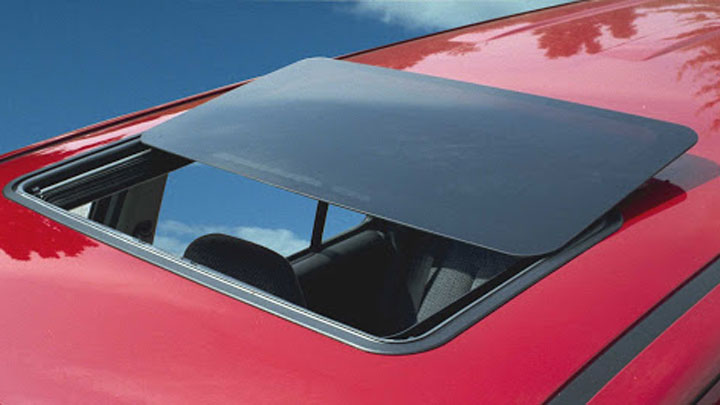
Offered on some European cars, this sunroof is similar to the spoiler design but is longer. Made of glass, it opens and slides to the rear above the roof on roof mounted tracks.
#6 – Panoramic Roof System
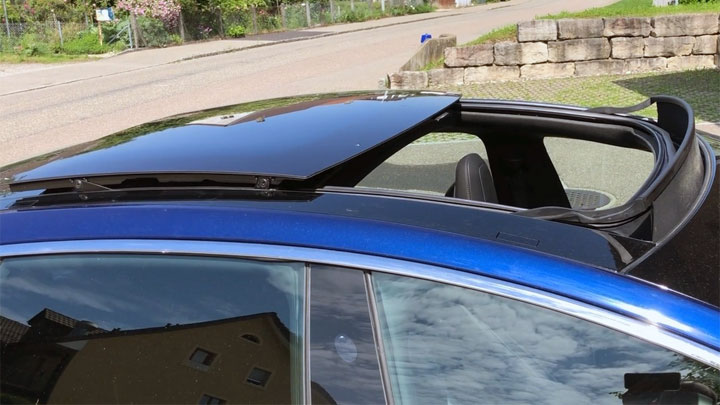
These can be non-opening large glass panels or a combined openable front glass panel with a fixed glass panel above the rear passengers. The idea here is to provide a panoramic view of the sky for all occupants.
Sometimes the forward panel is a top slider, stored outside above the rear glass when opened. The glass may be permanently tinted or may feature an electronically activated tint to darken it when necessary.
If this sounds costly, your fiscal perceptions are working fine.
#7 – Removable Roof Panel
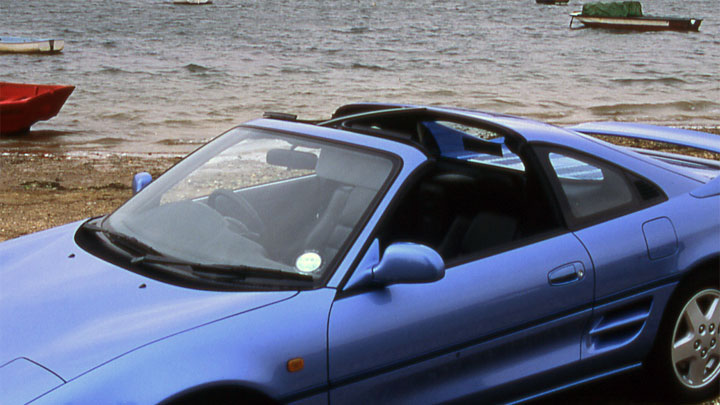
This is best presented as the T-top (or Targa) design first popularized by the Porsche 911S in 1966 and introduced on some Corvette models in 1984.
Such panels latch snugly in place but are light enough to be removed and stored in a designated location inside the car.
#8 – Motorized Roof Panel
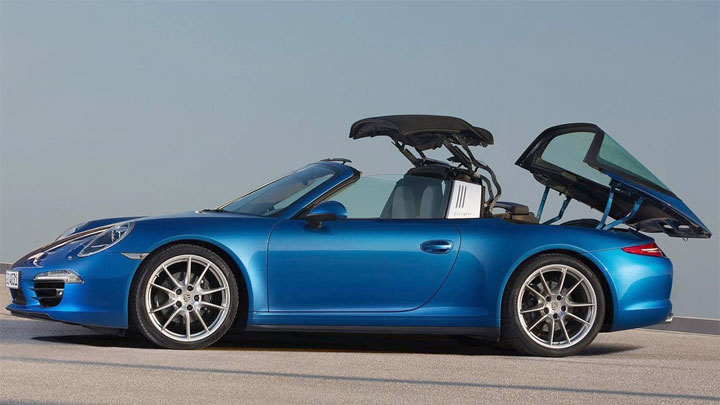
This system offers a front roof section that can be automatically lifted from position and stored beneath the rear roof. Complex and costly, this duplicates the look of the 911S Targa roof concept without having to physically lift out and store a roof section.
This arrangement emerged on the Porsche 991 Targa in 2014. Bring your wallet.
Which Type of Sunroof is Best?
This is a difficult question to answer. For each of you your opinion on features and benefits will weigh against disadvantages in making your assessment of which is more desirable.
Additionally you may have to examine the type or types of sunroofs that may be offered on the car you are seeking to buy. So let's first discuss the overall advantages and disadvantages of having any kind of sunroof on your car.
Advantages vs. Disadvantages of a Sunroof
Getting a sunroof offers some measure (but not all) of the convertible top down feeling. Sunlight in abundance and wind in your hair. Some folks love this. Some folks don't like it at all.
My wife's car has a sliding glass sunroof. She never opens it for any reason. She never even opens the interior sliding sun shade. In all other respects she is a remarkably normal person.
Being able to tilt the roof up to ventilate the car when parked is a nice feature. Also when hopping into a hot car the ability to vent hot air out as you start to drive can help cool the car more quickly. In actuality, neither of these benefits is really essential if you have air conditioning.
A sunroof can give added interior light if a passenger wants to read while you travel. But abundant light for reading streams in through all the other windows. So this is not truly something only a sunroof can provide.
See Also: Common Causes of a Car A/C Not Blowing Cold Air
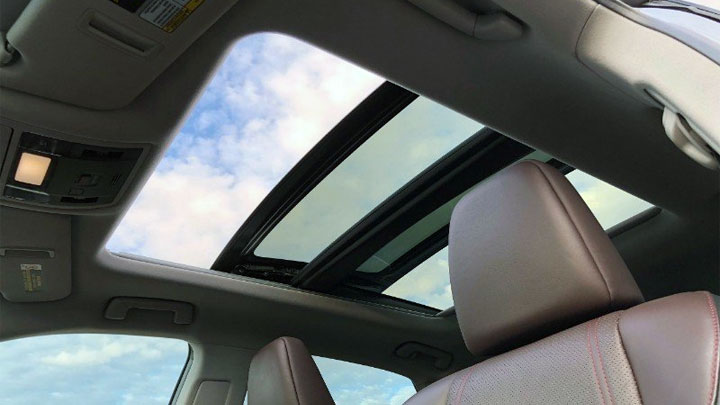
The inbuilt sunroof, the most common type, adds complexity to the already quite complex automobile. Its operating mechanism may fail requiring costly repairs.
The glass is exposed to the elements and may be broken by hail. Yes, hail can dent your roof (unless you have a hail-proof car cover), but a sunroof adds a point of vulnerability that could admit gallons of rain during that hailstorm.
You may get some style points with a sunroof because it does look nice. The flip side here is that it's virtually invisible until one gets right alongside your car.
If you are buying a high performance car and expect the best acceleration and handling possible, keep in mind that a sunroof adds weight.
In some cases for a panoramic system this could be as much as 150 lbs. That's like having an extra passenger on the roof of your car at all times. Less weight always equals better performance. So if that's your primary objective maybe a sunroof is not the best idea.
Finally, consider this: A sunroof may add $1000 to $1500 to the sticker price of a new car. You should ask yourself, will I get sufficient benefits to justify this additional cost? How often will I open this sunroof? Lots of times? Almost never?
It's worth answering these questions before adding to that new car price.
Related: 19 Best Sports Cars Under $50,000
Benefits of Each Sunroof Type
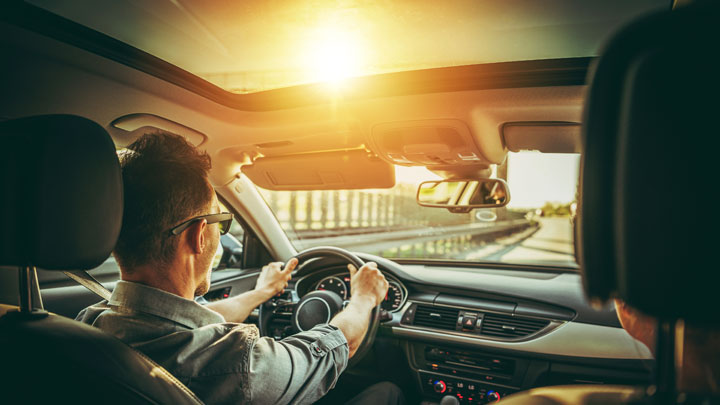
Inbuilt Sunroof
The most feature rich sunroof. It includes a vent feature and when fully open, gives you that open car feel. The sun shade enables it to be fully closed to everything including light. And you can see the stars at night.
Read Also: Rolling Windows Down vs Running A/C
Popup Sunroof
Inexpensive and offers the vent feature. All the inbuilt sunroof capabilities can be included here without the complex operating machinery.
Spoiler Sunroof
More costly than the popup but less costly than the inbuilt types. All the inbuilt sunroof benefits come with this design but with no reduction in rear seat headroom. The sunroof will be subject to bug splats when open and exposed.
Folding or Ragtop
Not readily available in the United States. Offers a larger opening than most other sunroof designs yielding a more convertible-like experience. Similarly priced to the inbuilt types.
Top-mount Sunslider
Larger area opened in the roof. Would give a more convertible-like experience. Cost likely to be equivalent to the inbuilt types.
Panoramic Roof System
The best sky view of all sunroof types especially with the roof closed. Clever electronic darkening provision is more convenient than the low tech sliding shade.
Curved shape of the rear glass roofline may offer more headroom for rear seat passengers. A non-opening full panoramic roof can be a lovely cosmetic improvement for any contemporary car. May be more costly than the inbuilt types.
Removable Roof Panel
This design most nearly approaches the open feel of a convertible. It is light in weight and simple in operating concept. Only offered on a very limited number of makes and models.
Motorized Roof Panel
All the open feel benefits of the removable roof panel. None of the minor challenges of removal and storage followed by reinstallation. Possibly the most costly of all the sunroof options discussed above.
See Also: How to Remove Bird Poop From Your Car
Reasons Why You May Want to AVOID a Certain Type
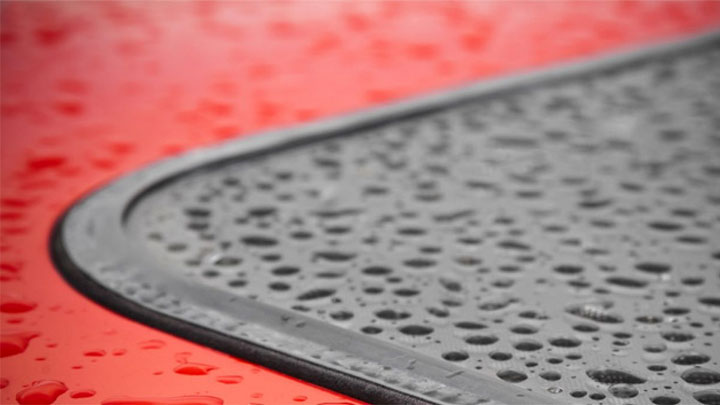
It may be well-advised to avoid the following sunroof designs if you have any say in the matter. For example, you may be considering an exotic pre-owned car with one of these sunroofs.
Here's why you might want to exercise caution in such a purchase:
Folding or Ragtop
These designs are simply not common in the United States. For this reason both spare parts and service may be difficult to find should these ever be needed. Also the fabric of these styles makes your car vulnerable to ease of unwanted entry and theft.
Last, fabric roofs will have a tendency to prematurely degrade due to weather. Hot summer sunlight and bitter cold winter ice storms can bring an early demise to fabric roof materials.
Top Mount Sunslider
When open, this design presents a huge surface area to the air that's speeding by. A much bigger surface than the spoiler design. At 70 to 80 mph, air loads could loosen or damage the supporting structure.
If considering a car with such a sunroof, I suggest the following: Consult the sunroof manufacturer or installer and request maximum operating speeds if any with the sunroof open. Having the roof system evaluated by a qualified technician is also an excellent idea.
Removable Roof Panel
You will find these on older Porsches, Corvettes and several other makes. They are retained by simple but durable latching systems. Nonetheless these latches should be evaluated for condition and proper operation. Weather-stripping should also be examined for condition.
Any concerns you may have in this regard should be corrected by a qualified dealer technician. Be sure to get receipts for all work done to correct any deficiencies.
Motorized Roof Panel
If you find a Porsche 991 Targa you just can't resist with this roof, I strongly urge you to get the folding system and weather stripping (actually the entire car) evaluated by a Porsche dealership or qualified shop before you make your purchase.
Porsche parts and service are quite costly. You simply don't want to buy a car with a problem roof system you will have to pay to fix after you get your prize home.
Can a Sun or Moonroof be Added to My Car?
The answer to this question is a moderately equivocal yes. But this is definitely NOT a DIY job.
There are sunroof installation shops available around the country and aftermarket sun or moonroof designs that can be "bolted in". Some shops can even find a used (junkyard) sunroof that can be adapted to your car.
Cost would be a factor, the first cost of the sunroof itself (and other related parts) and then the labor costs. The least expensive to purchase and install would be the popup sunroof. Next costly would be the spoiler sunroof.
Each of these require no extra space above the headliner thus simplifying the needed headliner changes. If you can get by with a manual operating system, no need to install and wire a control system would help reduce installation costs as well.
Next costly would be an inbuilt design followed by a panoramic system. Other designs described above may not be available in the United States.
However a skilled custom shop could install most any type of sunroof if you are willing to spend the necessary bucks.
Some things to ponder should you be considering having a sun or moonroof added to your car:
- Will the aftermarket sunroof match the contours of the roof of your car? A quality installation shop will address this challenge. A less experienced shop could give you a roofline that is out of sync with the roofline your car had from the factory. This is worth discussing before you allow any technician to get out his sabre saw.
- Will the installation of the sunroof remove any critical structural members from your car's roof? Cars built over the last twenty years or so are designed to meet certain Federal crash standards. That may include specific structural elements in the roof. If those are removed to make space for a sunroof, you could be more vulnerable to injury in the event of a severe collision.
- How will the addition of an aftermarket sunroof impact the resale value of your car? This might be worth discussing with an experienced salesman at the dealer where you bought your car. Cutting into the roof of your pristine 2018 BMW M5 could adversely hammer its value when it comes time to trade it in.
- Ask yourself, do I really need this on my car? Before you jump into the sun or moonroof process, rethink the discussion above about Advantages vs. Disadvantages of a Sunroof.
Source: https://cartreatments.com/sunroof-vs-moonroof/